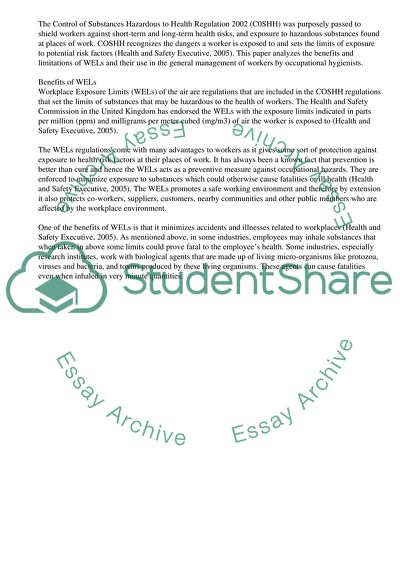Cite this document
(The Control of Substances Hazardous to Health Regulations - Workplace Coursework, n.d.)
The Control of Substances Hazardous to Health Regulations - Workplace Coursework. Retrieved from https://studentshare.org/management/1730602-workplace-exposure-limits
The Control of Substances Hazardous to Health Regulations - Workplace Coursework. Retrieved from https://studentshare.org/management/1730602-workplace-exposure-limits
(The Control of Substances Hazardous to Health Regulations - Workplace Coursework)
The Control of Substances Hazardous to Health Regulations - Workplace Coursework. https://studentshare.org/management/1730602-workplace-exposure-limits.
The Control of Substances Hazardous to Health Regulations - Workplace Coursework. https://studentshare.org/management/1730602-workplace-exposure-limits.
“The Control of Substances Hazardous to Health Regulations - Workplace Coursework”. https://studentshare.org/management/1730602-workplace-exposure-limits.


